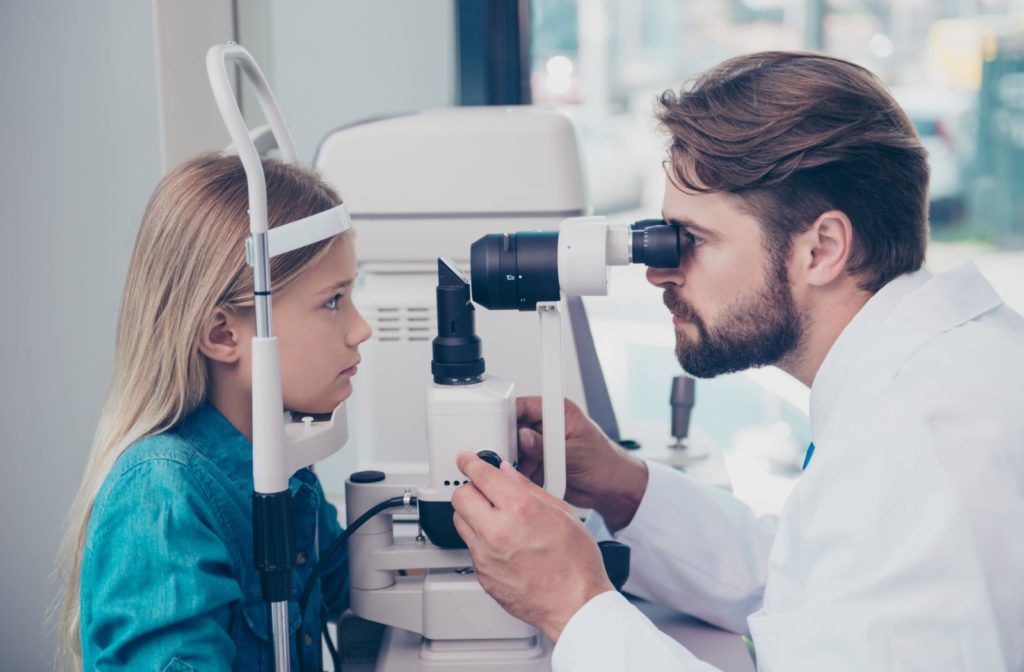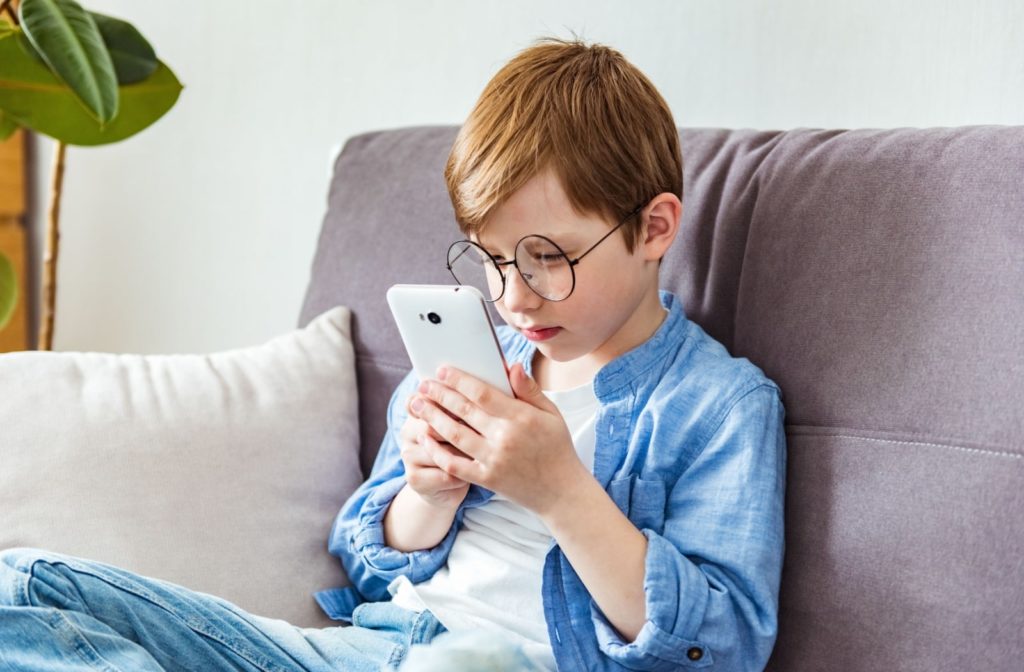In the digital age, screens are an essential part of daily life. From the smartphones we check in the morning to the computers we stare at for work or study, screen time is pervasive. As our lives become increasingly digital, concerns about eye health, specifically myopia, have emerged. This begs the question: Does screen time actually cause myopia, also known as nearsightedness? Screen time has been linked with the development of myopia, but there are other factors that can affect the onset of myopia.
Understanding Myopia
Myopia occurs when the eye grows too long from front to back, causing light rays to focus at a point in front of the retina rather than directly on its surface. This condition makes it difficult to see distant objects, while close objects can be seen clearly.
The prevalence of myopia has significantly increased in recent years, correlating with the rise in screen time from computers, tablets, and smartphones. However, it is crucial to understand that myopia development is influenced by a combination of genetic and environmental factors, not solely screen usage. Current research indicates that engaging in near-work activities, such as reading, studying, or writing, can potentially accelerate the progression of myopia.
The Role of Screen Time
The exact link between screen time and myopia remains an area of ongoing research. However, studies suggest that prolonged focus on close-up objects — like screens — can strain the eyes and may be associated with the development and progression of myopia in children and young adults.
The “accommodation theory” proposes that constantly focusing on near objects can cause the eye to elongate, leading to myopia. Although conclusive evidence is yet to be established, some researchers believe that increased use of electronic devices in modern lifestyles contributes to the rising rates of myopia witnessed around the globe.
Factors to Consider
While screen time is often scrutinized, it’s not the only factor that may impact myopic development. Lack of outdoor activity has also been cited as a significant contributor. Exposure to natural light and the need to focus on distant objects outside seem protective against myopia. A balance between near-focus activities like screen usage and far-focus activities like being outdoors is essential. Research shows that exposure to sunlight when outdoors can help promote healthy eye development.
Additionally, evidence suggests that proper lighting, taking breaks from screens every 20 minutes, and maintaining an appropriate distance from the screen can reduce eye strain and potentially decrease the risk of myopia. Other factors such as genetics, family history, and ethnicity also play a significant role in determining one’s likelihood of developing myopia.
Recommendations for Healthy Screen Use
To mitigate potential eye strain and risk factors for myopia from screen use, consider the following tips:
- Implement the 20-20-20 rule: Every 20 minutes spent using a screen, look away at something 20 feet away for at least 20 seconds. This small break can help reduce eye strain by allowing the eyes to relax and refocus, potentially mitigating the risk factors associated with myopia.
- Use proper lighting: Working in well-lit environments can significantly decrease eye strain. Avoid using screens in bright or dark rooms; aim for a balanced lighting setup that reduces screen glare.
- Adjust screen settings: Optimize your screens’ brightness, contrast, and font size to levels that feel comfortable for reading and working. This can decrease the strain on your eyes and make extended screen time less taxing.
- Maintain a healthy distance and position to screens: The distance between your eyes and the screen should be at least an arm’s length away. The screen should be positioned slightly below eye level to avoid bending your head or neck unnaturally, which can affect your eyes and your posture.
- Increase outdoor time: Commit to spending more time outdoors during daylight hours. Neuroscientific findings suggest that natural light may help control eye growth and prevent myopia from developing or worsening. Encouraging children to play outside and engage in far-sighted activities could be particularly beneficial in the long run.

When to See an Eye Care Professional
Regular eye examinations are essential, especially if you experience symptoms like blurred vision, eye strain, or headaches. An eye care professional can provide personalized advice and interventions, such as corrective lenses or vision therapy, to help slow the eye’s growth, reduce the prescription a child may need, and, more importantly, reduce the risk of complications later in life.
The Link Between Myopia & Screen Time
While the relationship between screen time and myopia development isn’t fully understood, prudent use of screens and near work, combined with a healthy dose of outdoor activities, is advisable. Whether for work, entertainment, or communication, screens are here to stay, so it’s critical to use them mindfully to protect our vision.
If you have growing concerns about your eyesight or are due to have your vision checked, consider contacting Family Focus Eyecare. Booking an appointment could be your first step towards long-term eye health in the digital world.



